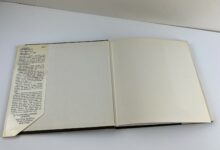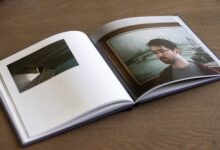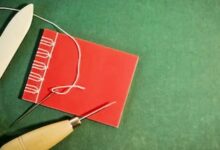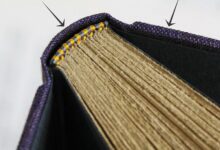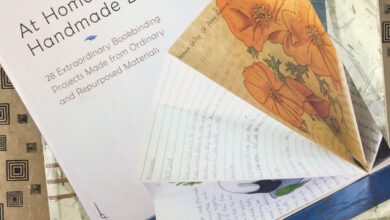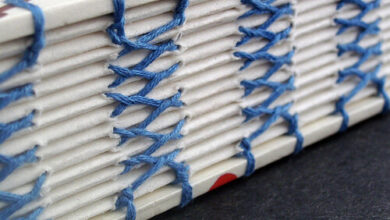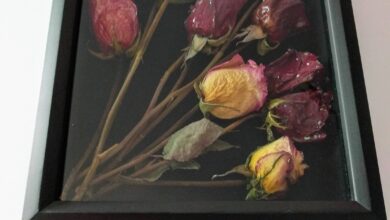Introduction
Hello, Readers! Are you a bookworm who has always been fascinated by the art of bookbinding? If so, you’re in for a treat. In this article, we will guide you through the process of creating your own books through the DIY bookbinding method. Whether you want to make personalized gifts for loved ones or simply enjoy the satisfaction of crafting your own literary masterpiece, this step-by-step guide will equip you with the knowledge and skills you need.
Bookbinding is not just a practical skill; it is an art form that has been practiced for centuries. With the advent of modern printing technology, the art of bookbinding has somewhat been lost in the shuffle. However, many individuals still find joy in creating their own handmade books. Not only does it provide a way to preserve cherished memories, but it also allows for creativity and self-expression.
In this comprehensive guide, we will take you through the entire DIY bookbinding process, from selecting materials to binding techniques and finishing touches. So gather your supplies and let’s dive in!
1. Materials
Before embarking on your bookbinding journey, it’s essential to gather all the necessary materials. Here’s a list of the basic supplies you’ll need:
| Materials |
Description |
| Paper |
Choose a high-quality paper that suits your preferences and purpose. |
| Cardstock |
Thicker and sturdier than regular paper, cardstock is ideal for creating covers. |
| Bookbinding glue |
Select a reliable adhesive specifically designed for bookbinding. |
| Bookbinding thread |
Opt for a strong and durable thread that will withstand frequent use. |
| Needle |
Choose a needle with a sharp point for easier sewing through the pages. |
| Ruler |
A ruler will help you measure and cut materials accurately. |
| Pencil |
Use a pencil for marking guidelines and making notes during the bookbinding process. |
2. Types of Binding
There are various binding techniques you can choose from when creating your own books. Here are a few popular options:
2.1. Coptic Stitch Binding
Coptic binding is a traditional method that involves sewing pages directly onto the cover. This technique allows the book to lay flat when opened, making it ideal for sketchbooks and journals. The exposed stitches add a beautiful decorative element.
2.2. Japanese Stab Binding
Japanese stab binding is characterized by the visible decorative stitching on the book’s spine. It is a relatively simple technique that results in a stunning final product. This binding style is suitable for small books with fewer pages.
2.3. Perfect Binding
Perfect binding is the method commonly used in paperback book production. It involves attaching the pages to the cover using a strong adhesive. This technique provides a professional finish and is ideal for larger projects such as novels.
2.4. Long Stitch Binding
Long stitch binding is a versatile technique that allows for creativity in design. It involves sewing the pages directly onto the cover using a long stitch that extends across the spine. This method works well for both thin and thick books.
…
Disclaimer: The information provided in this article is for informational purposes only and should not be considered as professional advice. The techniques described may vary depending on individual preferences and skill levels. Always exercise caution and seek guidance from experts when working with sharp tools and adhesives.
Originally posted 2023-09-11 03:16:32.
Checkout These Recommendations:
- Exploring Different Types of Bookbinding: Which One is Right… Hello readers, welcome to this article on exploring different types of bookbinding. If you are a book lover or someone who appreciates the art of bookmaking, understanding the various methods…
- Bookbinding for Journaling: Customizing Your Own… Hello Readers, welcome to this informative article on bookbinding for journaling. In this digital age, where everything seems to be online and ephemeral, journaling offers a refreshing break by enabling…
- The Ultimate Guide to BookBinding Techniques 📚 Introduction 📚 Hello visitors and welcome to the Ultimate Guide to BookBinding Techniques. Do you have a passion for creating your own books or repairing old ones? Or do…
- Bookbinding as a Hobby: Relaxing and Creative Ways to Bind… An Intriguing World of Bookbinding Hello readers! Welcome to the fascinating world of bookbinding, where you can unlock your creativity and find relaxation through the art of binding your own…
- Bookbinding Business: Tips for Starting and Running a… Hello Readers! Welcome to this journal article, where we will explore the world of bookbinding business and discuss essential tips for starting and running a successful bindery. Whether you are…
- Preserving Your Books: How Proper Bookbinding Can Extend… Greetings, Readers! Welcome to our journal article on preserving your books and extending their lifespan through proper bookbinding techniques. In this digital age, where e-books dominate the market, it is…
- Bookbinding for Comic Book Fans: Creating Custom Bindings… An Art Form for Comic Book Enthusiasts Hello Readers, welcome to this journal article on the fascinating world of bookbinding for comic book fans. If you are a lover of…
- Bookbinding for Graphic Designers: Creating Unique Portfolio… Introduction Hello readers, Welcome to this article on bookbinding for graphic designers. In the competitive world of graphic design, a unique and well-crafted portfolio can make all the difference. With…
- Bookbinding for Book Collectors: Displaying and Protecting… Welcome, Readers! Greetings, esteemed readers! In this article, we delve into the fascinating realm of bookbinding, focusing specifically on displaying and protecting valuable editions. For book collectors and enthusiasts, this…
- Bookbinding for Genealogy: Creating Family History Books and… An Introduction to Bookbinding for Genealogy Hello Readers, welcome to an informative article on bookbinding for genealogy. In this article, we will explore the art of creating family history books…
- Bookbinding for Kids: Fun and Educational Projects to Spark… Introduction Hello, Readers! We are excited to share with you a thrilling and educational activity for kids - bookbinding! Bookbinding is a craft that has been practiced for centuries, and…
- Bookbinding for Wedding Invitations: Adding Elegance to Your… Greetings, Readers! Your wedding day is a special occasion that deserves attention to every detail. One way to add a touch of elegance and sophistication to your wedding invitations is…
- The History of Bookbinding: From Ancient Scrolls to Modern… Hello readers, Introduction Throughout history, the art of bookbinding has played a crucial role in preserving and protecting valuable texts. From the earliest form of bookbinding seen in ancient scrolls…
- Bookbinding for Scrapbookers: Techniques to Preserve… An Introduction to Bookbinding for Scrapbookers Hello Readers! Welcome to an exciting journey into the world of bookbinding for scrapbookers. In this article, we will explore various techniques that allow…
- Unleashing Creativity: DIY BookBinding Projects Unleash your creativity with fun and easy DIY Bookbinding projects! Hello Visitors! Are you looking for a fun new hobby that allows you to unleash your creativity while also creating…
- BookBinding for Beginners: Getting Started Made Easy Welcome, Visitors! If you're reading this article, you're probably interested in bookbinding. Whether you're a creative person looking for a new hobby or an author wanting to publish your own…
- Bookbinding for Book Lovers: Enhancing Your Reading… Introduction Hello, Readers! Are you a passionate book lover, always on the lookout for ways to enhance your reading experience? If so, then you've come to the right place. In…
- The Art of Bookbinding: A Comprehensive Guide for Beginners Welcome, Readers! Greetings, readers! Welcome to this comprehensive guide on the art of bookbinding for beginners. In this article, we will explore the intricate world of bookbinding, guiding you through…
- 10 Must-Have Tools for Successful BookBinding Hello, visitors! Welcome to our guide on 10 Must-Have Tools for Successful BookBinding. BookBinding is an art form that requires proper tools for a successful outcome. Whether you're a beginner…
- Revive Old Books: BookBinding Restoration Techniques Are you a book lover who has a collection of old books that require restoration? You may think that old books are a lost cause when they start to fall…
- From Page to Cover: Designing Stunning BookBinding Art Bookbinding art is a rare form of creative art that has the power to transform any book from a mere reading instrument to a cherished work of art. This pleasant…
- Bookbinding for Cookbooks: Keeping Your Favorite Recipes… An Effective Way to Preserve Your Culinary Treasures Hello, readers! Are you someone who loves experimenting with different recipes and cherishes your collection of cookbooks filled with mouth-watering delights? If…
- BookBinding as a Therapeutic Craft: Relieving Stress through… The Healing Power of BookBinding Bookbinding is a therapeutic craft that has been around for centuries, providing individuals with a creative outlet and a way to relieve stress. At its…
- Creating Unique Handmade Journals: A BookBinder's Delight 📚 Introduction: A Warm Welcome to Our Visitors 📚 Hello and welcome, dear visitors! In today's modern digital world, keeping a journal can be a convenient and quick way to…
- Bookbinding for Writers: Presenting Your Manuscript in a… An Essential Guide to Presenting Your Manuscript with Elegance Greetings, dear Readers! Are you a passionate writer seeking to leave a lasting impression with your manuscript? Look no further, for…
- Step-by-Step BookBinding Tutorial for Beginners 📚 Introduction Hello Visitors, are you interested in bookbinding? If yes, you are in the right place! Bookbinding is a process of assembling a book from an ordered stack of…
- Bookbinding for Book Restoration: Repairing and Preserving… Introduction Hello readers! We would like to welcome you to this informative article on the art of bookbinding for book restoration. In this digital age, where e-books dominate the market,…
- Bookbinding for Teachers: Engaging Students with Handmade… Introduction Hello Readers, welcome to this article on Bookbinding for Teachers: Engaging Students with Handmade Classroom Materials. In today's digital age, it is crucial for teachers to find innovative ways…
- BookBinding: The Art of Preserving Memories Greetings Visitors: Preserving Your Memories with BookBinding 👋🏽📝📔 As we go through life, we collect moments that we want to cherish and remember. Photos, letters, and stories are all pieces…
- Bookbinding for Zine Makers: DIY Techniques for… An Introduction to Bookbinding for Zine Makers Hello readers! Welcome to this comprehensive guide on bookbinding techniques for zine makers. In the digital age, where online content dominates, there is…
